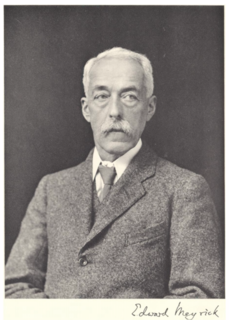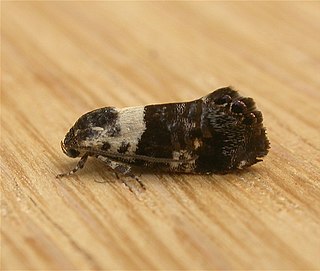| Eupselia callidyas | |
|---|---|
| Scientific classification | |
| Kingdom: | |
| Phylum: | |
| Class: | |
| Order: | |
| Family: | |
| Genus: | |
| Species: | E. callidyas |
| Binomial name | |
| Eupselia callidyas Meyrick, 1915 | |
Eupselia callidyas is a moth in the family Depressariidae. It was described by Edward Meyrick in 1915. It is found in Australia, where it has been recorded from the Northern Territory. [1]

Moths comprise a group of insects related to butterflies, belonging to the order Lepidoptera. Most lepidopterans are moths, and there are thought to be approximately 160,000 species of moth, many of which have yet to be described. Most species of moth are nocturnal, but there are also crepuscular and diurnal species.

Depressariidae is a family of moths. It has formerly been treated as a subfamily of Gelechiidae, but is now recognised as a separate family, comprising about 2300 species worldwide.

Edward Meyrick FRS was an English schoolmaster and amateur entomologist. He was an expert on Microlepidoptera and some consider him one of the founders of modern Microlepidoptera systematics.
The wingspan is 12–13 mm. The forewings are dark bronzy fuscous with the basal area tinged with rosy purple and with an erect elongate-triangular light ochreous-yellow blotch from the dorsum before the middle nearly reaching the costa. There are two light yellowish spots on the costa towards the middle, where two parallel bright coppery-blue-purple lines run direct to the dorsum. Two oldique transverse coppery-blue-purple lines are found before the apex and there is a black streak along the lower portion of the termen containing three small round black spots set in whitish-ochreous rings becoming golden metallic on the terminal edge. There is also a light purple-brownish ovate blotch lying along this streak and limited above by the first pre-apical line, minutely strigulated longitudinally with darker purple brown sprinkled with blackish specks. The hindwings are dark grey. [2]

The wingspan of a bird or an airplane is the distance from one wingtip to the other wingtip. For example, the Boeing 777-200 has a wingspan of 60.93 metres, and a wandering albatross caught in 1965 had a wingspan of 3.63 metres, the official record for a living bird. The term wingspan, more technically extent, is also used for other winged animals such as pterosaurs, bats, insects, etc., and other fixed-wing aircraft such as ornithopters. In humans, the term wingspan also refers to the arm span, which is distance between the length from one end of an individual's arms to the other when raised parallel to the ground at shoulder height at a 90º angle. Former professional basketball player Manute Bol stands at 7 ft 7 in (2.31 m) and owns one of the largest wingspans at 8 ft 6 in (2.59 m).

